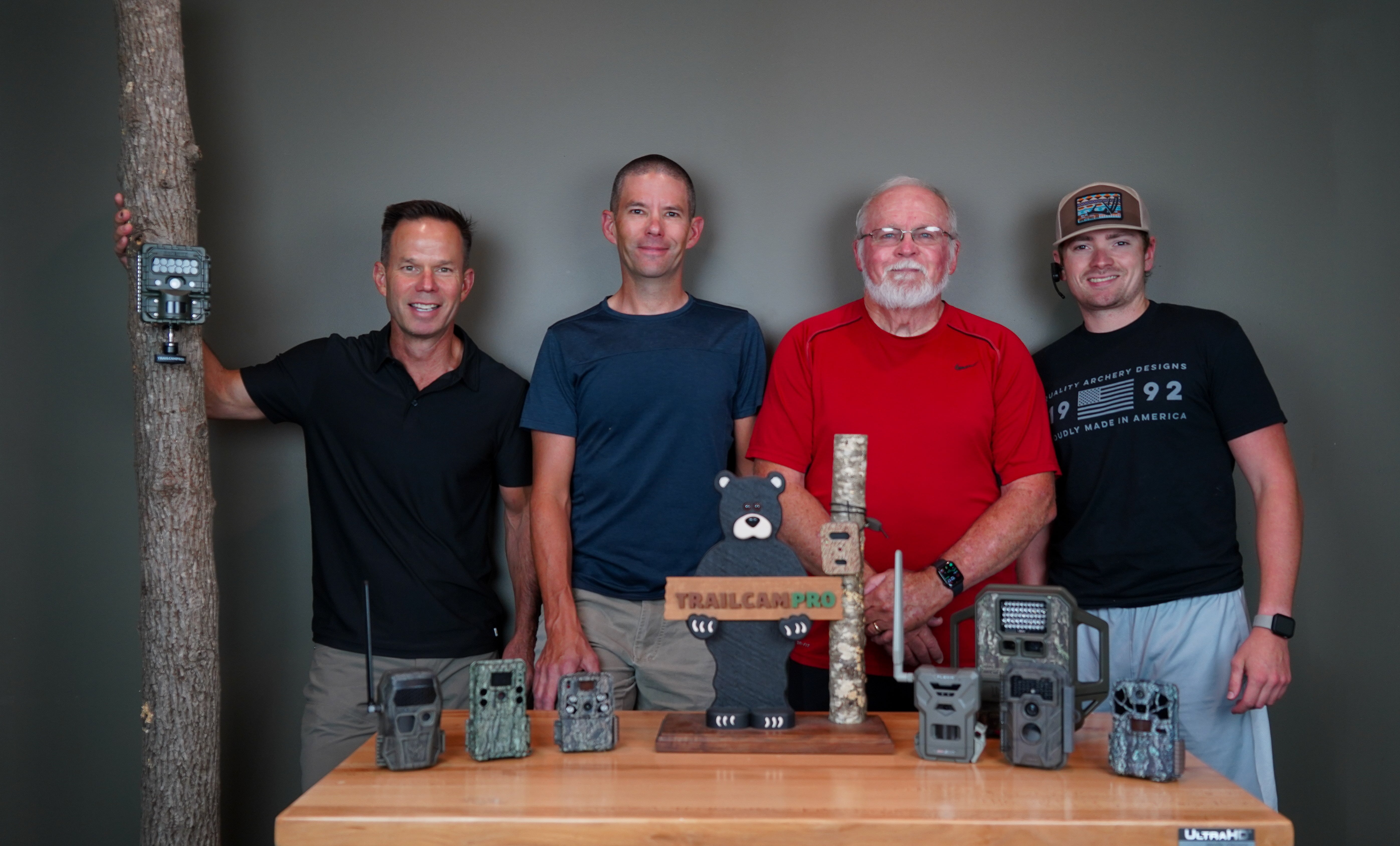2023 Flash Range Shootout
 Trail camera Flash Range has a tremendous impact on the effectiveness of any trail camera. Below we’ll touch on both the internal & external variables and explain why we test the way we do. Since the majority of all trail cameras use an infrared flash, the items referenced in this flash camera test will only pertain to IR flash cameras.
Trail camera Flash Range has a tremendous impact on the effectiveness of any trail camera. Below we’ll touch on both the internal & external variables and explain why we test the way we do. Since the majority of all trail cameras use an infrared flash, the items referenced in this flash camera test will only pertain to IR flash cameras.
Internal Variables
- Type of infrared LEDs - Infrared emitters used in trail cameras produce light wavelengths anywhere from 700 nanometers up to 940 nanometers with the most common being 850 (red glow) and 940 (no glow). As IR wavelength increases, it becomes more difficult for animals to visibly detect. It is believed wavelengths above 900nm produce light which is invisible to the human eye. However, all animals (humans included) are not genetically equivalent. Certain members of our staff are routinely able to see 940 no glow flashes that other members can't. What does hold true is higher NM flashes typically produce less illumination and/or use more power. Historically, red glow cameras in our shootout have outperformed their no glow counterparts.
- # of infrared LEDs– There is a direct correlation with the number of LED's and flash range. Cameras which have a larger number of infrared LED's in their flash will almost always have more illumination than cameras with fewer LEDs. One exception is the recent introduction of high intensity LEDs. Some cameras with just 4 or 5 high intensity LEDs produce more illumination than traditional arrays with 40 LEDs.
- Energy Used – Think of your hand-held flashlight when it’s low on batteries vs. the strength of its beam with a fresh set of batteries. Flash strength and range of illumination are directly influenced by the amount of power sent to a flash. At the expense of battery life, some cameras send more power to their flash than others. As a result, those cameras can have more illumination than other cameras with the same number of LEDs.
- Exposure time – This is an area many camera manufacturers have manipulated in recent years. At the expense of clarity, trail camera flash range can be extended by increasing exposure time. Essentially, the longer a shutter is left open, the farther out a flash will illuminate. Unfortunately, any movement during the time the shutter is open produces blurry photos. This is why we always provide a photo with a subject moving through the field of view next to each flash range photo.
External Variables
- Moonlight – The phase of the moon and the intensity of its light greatly influences flash range and illumination. A night photo taken under a full moon and clear sky can exhibit twice the flash range and illumination of a photo taken under an overcast sky with a crescent moon.
- Cloud cover – Regardless of moonlight, cloud cover influences flash range as well.
- Tree canopy – A dense tree canopy can completely negate any flash enhancing benefits of a full moon or clear sky.
We always perform our trail camera flash range test for all models tested on the same night, under the same moon and sky, in the exact same setting, under the same tree canopy with a fresh set of batteries. Please be very careful when comparing nighttime photos as it is very easy to manipulate results.
Equipment Issues
The size and type monitor one uses as well as the angle from which it is viewed will influence the perceived flash distance of a camera. In our evaluation, we use our largest and best monitor and tilt it at numerous angles to get the best range for each photo. We make every attempt to assess photos from their best perspective.
Criteria we used to rank photos
I want to first say this is one of the few tests we perform where human subjectivity comes into play. Having said this, we ranked photos using the following factors with priority based on the order they appear.
- Overall illumination across the entire field of view
- Clarity, Contrast & Resolution
- Presence of "Hot Spots" or areas of overexposure
In the end, different individuals may value different attributes and characteristics of photos. If nothing else, we have provided a sampling from most every camera on the market taken under very controlled and fair conditions for you to make your own evaluation.
Combined Red Glow, Low Glow & No Glow Infrared
 |
 |
 |
 |
 |
 |
 |
 |
5. Browning Strike Force Pro X
 |
 |
 |
 |
 |
 |
8. Bushnell Cellucore 20 Solar
 |
 |
 |
 |
 |
 |
 |
 |
12. Reconyx HyperFire 2 Cellular
 |
 |
13. Reconyx HyperFire 2 Professional
 |
 |
 |
 |
15. Reconyx HyperFire 2 Security
 |
 |
 |
 |
17. Browning Recon Force Elite HP5
 |
 |
18. HD King Solar
 |
 |
 |
 |
 |
 |
 |
 |
 |
 |
24. Stealth Fusion X Pro
 |
 |
 |
 |
 |
 |
 |
 |
28. Muddy Mitigator
 |
 |
29. Spypoint Force Pro Solar
 |
 |
 |
 |
 |
 |
 |
 |
 |
 |
34. Browning Strike Force Full HD
 |
 |
 |
 |
36. Browning Spec Ops Elite HP5
 |
 |
 |
 |
 |
 |
39. Browning Defender Vision Pro
 |
 |
 |
 |
Shop Cellular Trail Cameras
Security Trail Cameras
Batteries For Trail Cameras























































































